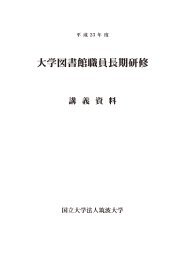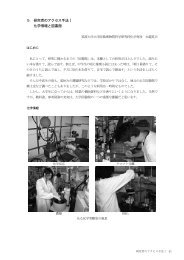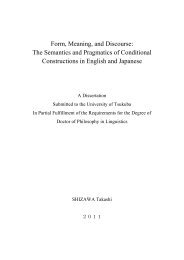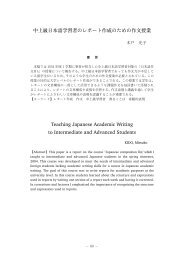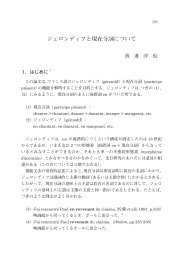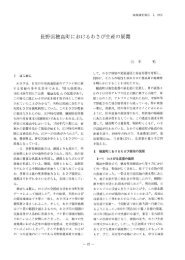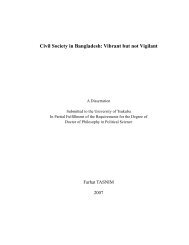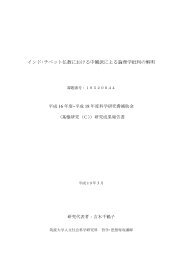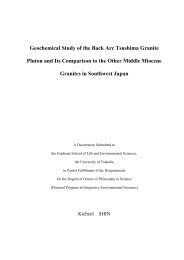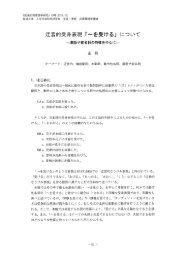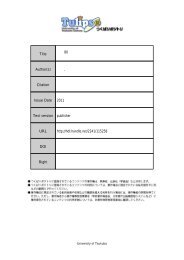Gamma Rays and CarbonIon-Beams Irradiation for Mutation ...
Gamma Rays and CarbonIon-Beams Irradiation for Mutation ...
Gamma Rays and CarbonIon-Beams Irradiation for Mutation ...
Create successful ePaper yourself
Turn your PDF publications into a flip-book with our unique Google optimized e-Paper software.
process, after the chromosome suffers damage due to physical <strong>and</strong> chemical<br />
factors, structural changes might result, if the damaged structure recovers,<br />
there will be no change in function. Thus, chromosome damage is a prelude to<br />
variations.<br />
On the topic of the banana plants subjected to the <strong>Gamma</strong> rays in<br />
“<strong>Gamma</strong> Field” did not confer any visible abnormalities during the 34-day<br />
exposure, in contrast with the materials irradiated in the “<strong>Gamma</strong><br />
Greenhouse” visible variation was shown 9 months after irradiation such as<br />
abnormal, double, long, rudimentary, spindled <strong>and</strong> yellow spotted leaf, caused<br />
by the effect of the long-term chronic irradiation which acts directly in the<br />
active cell division occurred in the meristem. These results suggest that an<br />
irradiation scheme using different exposure times could be explored to avoid<br />
injuries at the meristem levels.<br />
Interesting results were also obtained when the irradiated plants<br />
from <strong>Gamma</strong> rays <strong>and</strong> Carbon ion-beams were subjected to juglone. From<br />
<strong>Gamma</strong> rays irradiated materials, 20 plants were selected from the Orito lot, 8<br />
in ‘Williams’ <strong>and</strong> 5 in ‘Cavendish Enano’. From Carbon ion-beams irradiated<br />
plants 10 plants showing lower values of leaf necrotic area were selected.<br />
However, these results are not yet final, as further studies need to be<br />
implemented to confirm the tolerance to juglone in correlation with the results<br />
of the materials subjected to natural inoculum pressure of M. fijiensis under<br />
field condition.<br />
The three variables DDP-days, II-% <strong>and</strong> LDNA-% were combined<br />
analyzing the data by regression, permitting to categorize the plants showing<br />
better response against to the disease. The regression among the three<br />
combined variables showed close relationships in six plants. The code number<br />
were ‘W 16 II 74’, ‘W 128 I 67’, ‘W 1 II 148’, ‘W 8 II 13’, ‘W 1 II 19’ <strong>and</strong><br />
129



